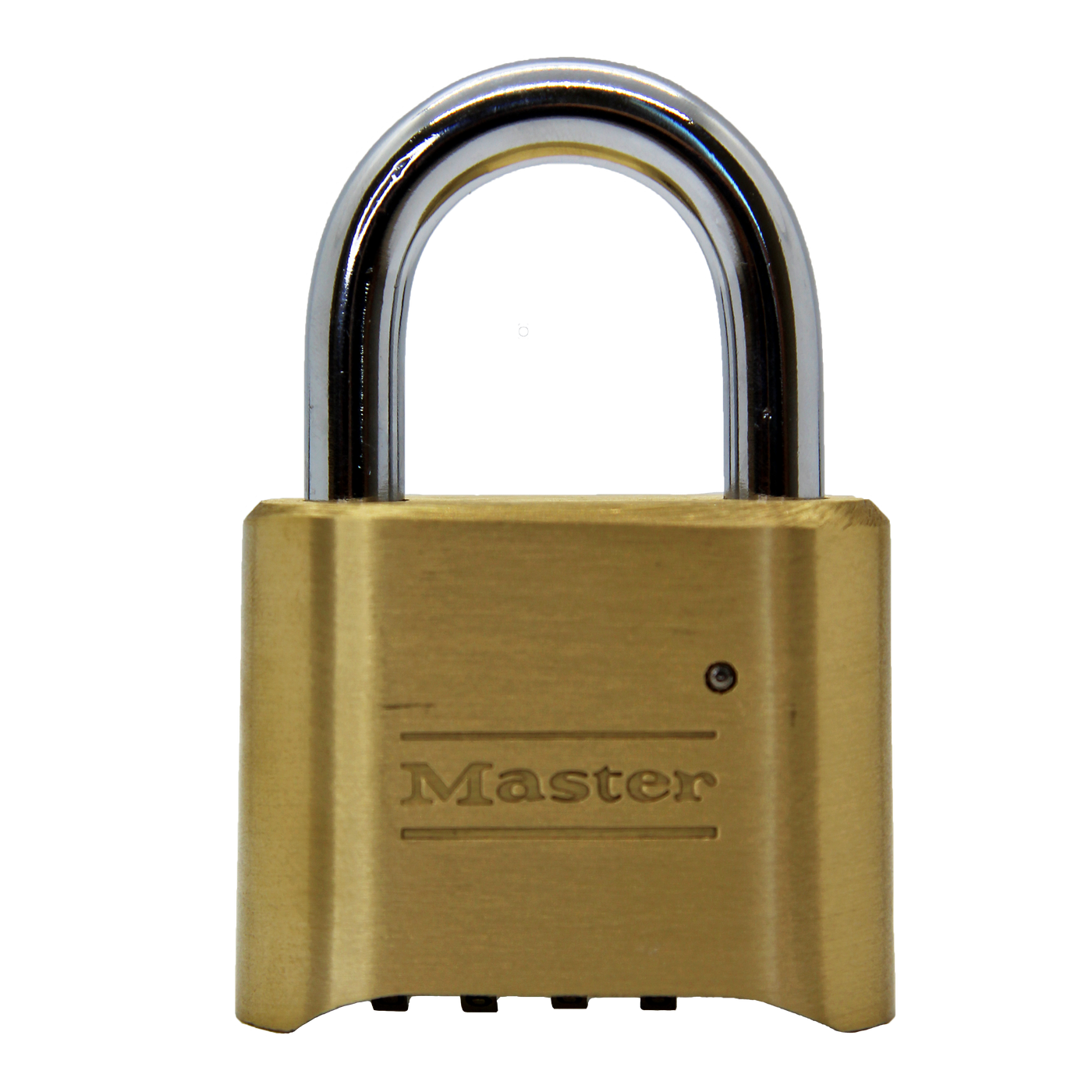
“Soref and Houdini were friends in the circus before the war,” he says. Lupiezowiec doubts the veracity of that story.
#Masterlock padlock how to
Legend has it that the inventor taught the escape artist how to pick his product. Soref also made Master Lock a household name through his friendship with Harry Houdini, the hugely popular magician of the early 20th century. However, business boomed in 1928 when the federal government placed a $65,000 order for 147,600 padlocks to secure “the naughty nightclubs of Broadway”- as quoted from a wire service article in Master Lock News in 1967-during Prohibition. Master Lock grew steadily from its start in 1921. To mark the centennial, Master Lock released a limited-edition 1921D Padlock. “He stamped out all these pieces, riveted them together and then ground it down for a finished appearance. “The laminated steel lock today is essentially the same as Soref’s original lock in 1921,” says John Lupiezowiec, a Milwaukee collector of Master Lock memorabilia and knower of all things related to the company. Yolles and Sam Stahl-saw the potential for the product and provided the necessary capital. Though some family members were confused by his initial proposal, a few farsighted friends-namely P. The inventor began tinkering with scraps of metal and realized stamped-out pieces could be formed into an extremely tough padlock. He recognized the hardened steel used for armor on battleships, tanks and other vehicles was ideal for making the new kind of lock he envisioned. government producing locks to protect military equipment during World War I.

Soref got the idea for his invention while working for the U.S. “Tough Under Fire” remains one of the highest-rated Super Bowl ads of all time. In 1974, the company ran a television commercial showing one of its locks surviving a high-powered blast from a rifle and still working.

Throughout much of the 20th century, Master Lock positioned its premier product as “The strongest padlock ever built.” Early advertising reinforced this notion with images of lions, giants and powerful hands holding the locks. “We still make versions of that original lock. “Harry Soref was a traveling locksmith who got the idea for a high-quality, high-security lock that was also affordable,” says Justin Matuszek, director of marketing solutions at Master Lock, which is still headquartered in Milwaukee. That innovation changed the industry and set Master Lock up to become a world leader in padlocks, combination locks and other security products. In other words, the lock casing or body is practically indestructible.”
#Masterlock padlock series
In 1924, Soref received a patent for a laminated steel padlock-essentially a series of metal plates fastened together to produce a durable yet inexpensive locking device that was difficult to break According to an early patent application, “the lock casing or body is substantially a metal block of considerable weight and inherent durability, which qualities enable it to successfully resist all ordinary attempts at its destruction. Soref's "Lock Casing," patented April 22, 1924. Top-of-the-line padlocks sold for more than $100 in today’s money Soref’s invention cost about a tenth of that price. Prior to 1921, locks were available in two styles: expensive but nearly impossible to break and cheap but easy to smash open. The business that the misunderstood entrepreneur founded is none other than Master Lock, which forever changed the security industry. “They thought he was talking about the salmon served with bagels and cream cheese,” she says. So goes the family lore, recalls Suzy Ettinger, whose late husband Alan was the grandson of one of the original investors. “Why would we want to put money in new lox? What’s wrong with the old lox?” The Russian, Yiddish-speaking Jewish immigrant approached family and friends in Milwaukee and asked if they would be willing to invest in his new business venture.

A century ago, Harry Soref had an idea for a new product: a tough but affordable lock.


 0 kommentar(er)
0 kommentar(er)
